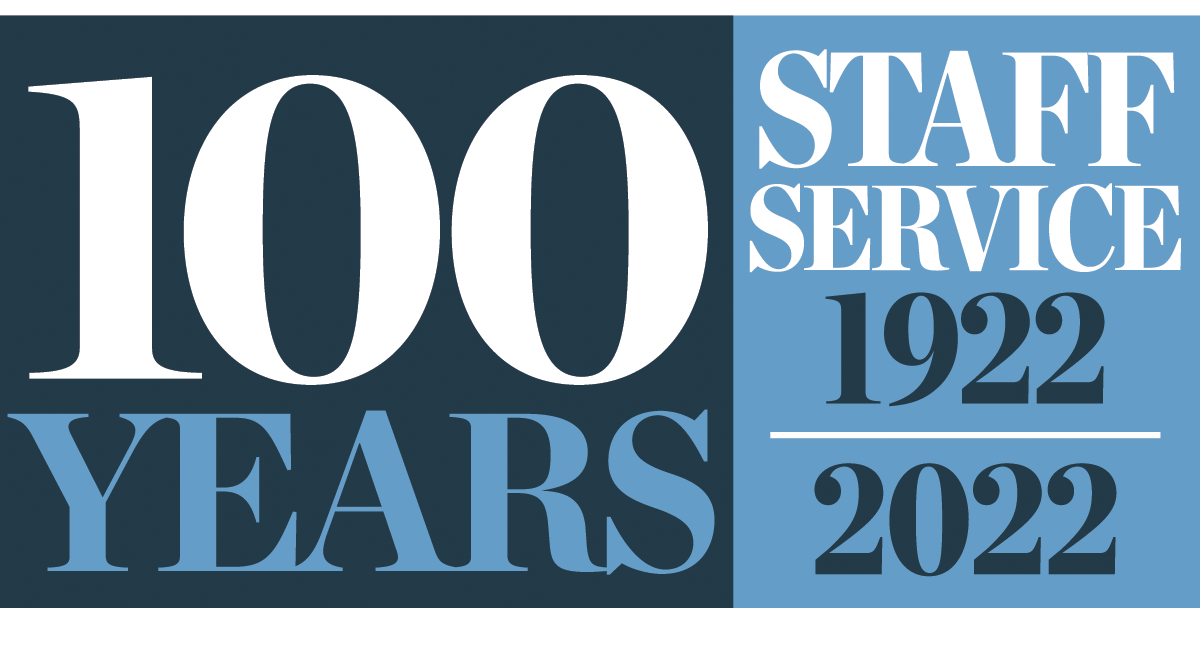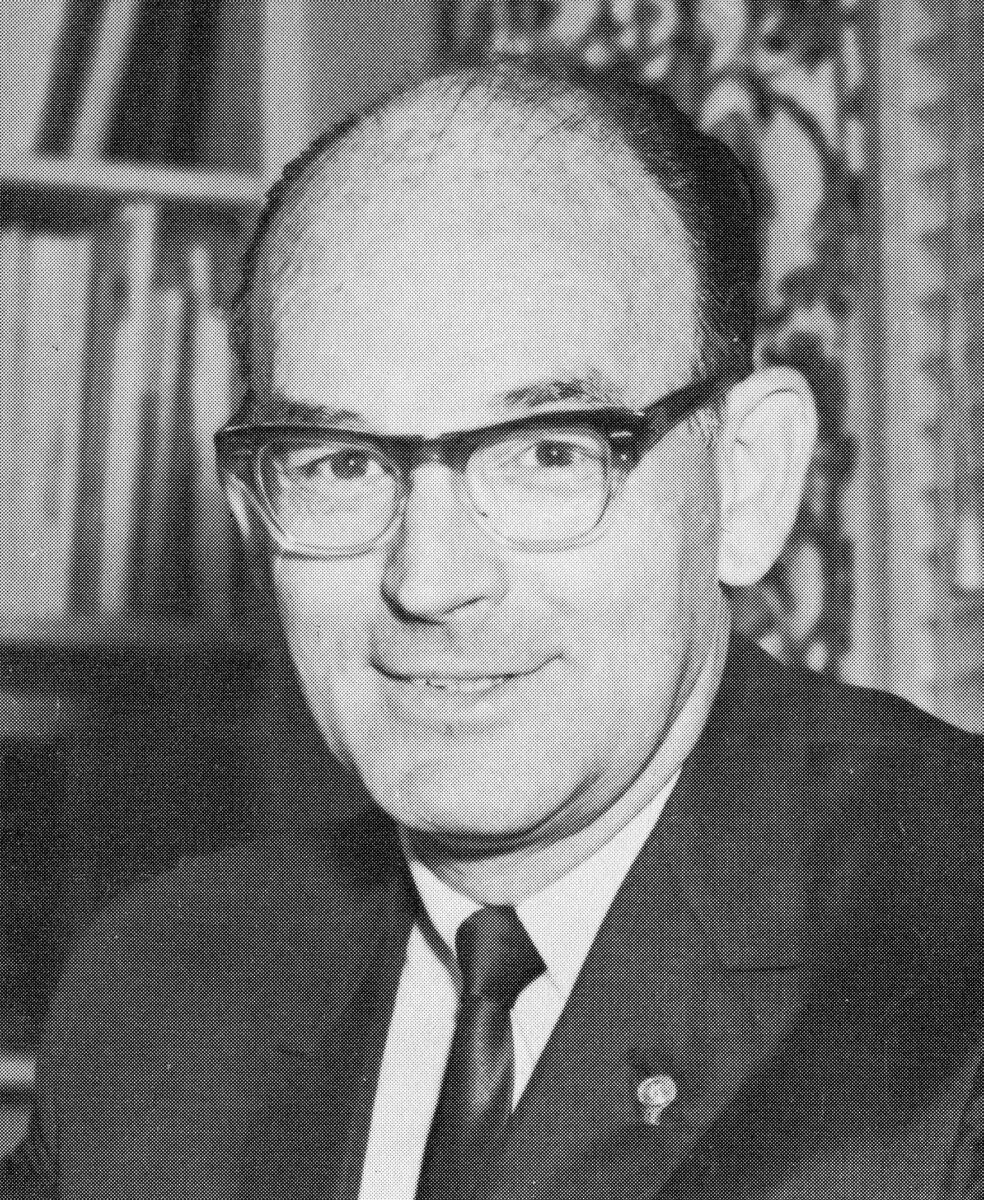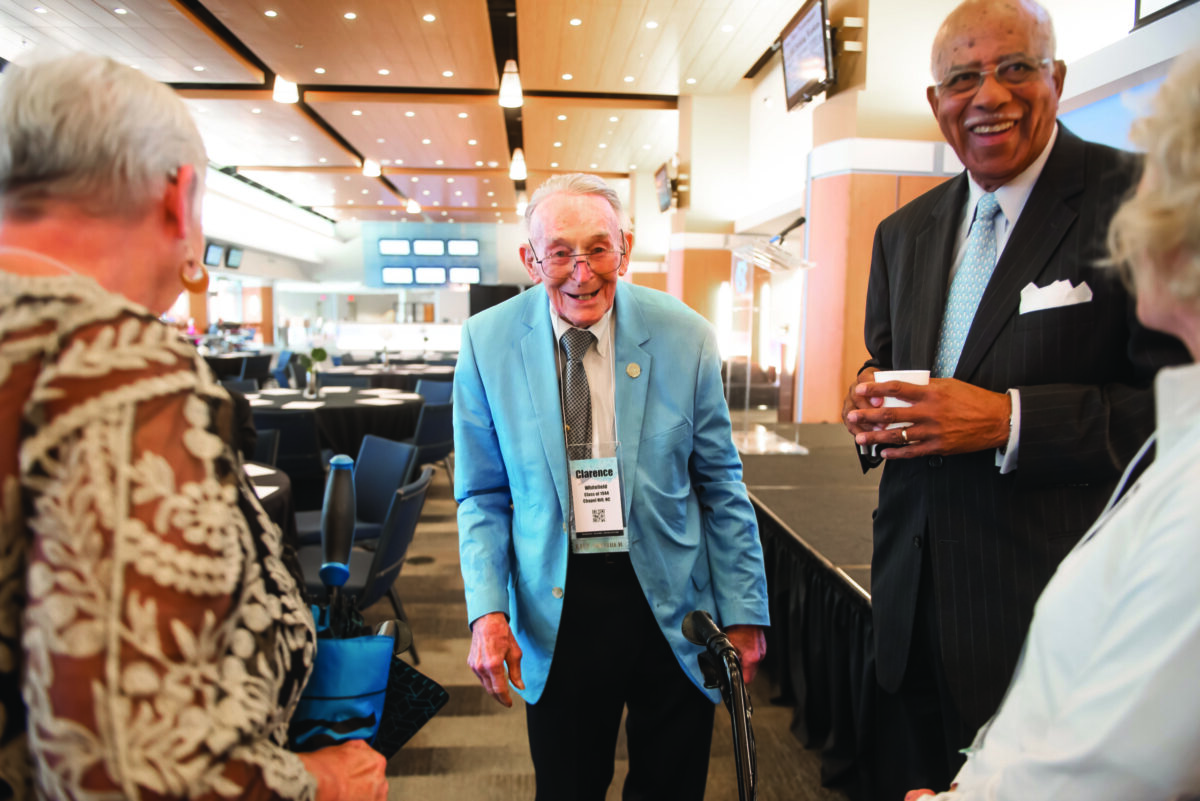The Value Proposition: Clarence Whitefield ’44
Posted on Aug. 30, 2022 In his first letter to alumni as “director of alumni affairs” in the September 1970 edition of The Alumni Review, Clarence Whitefield ’44 penned, “I guess I’m one of the luckiest guys in the world.”
In his first letter to alumni as “director of alumni affairs” in the September 1970 edition of The Alumni Review, Clarence Whitefield ’44 penned, “I guess I’m one of the luckiest guys in the world.”
Just weeks before, Whitefield had taken over the position previously titled “alumni secretary” at the General Alumni Association, succeeding J. Maryon “Spike” Saunders ’25 (’26 MA), who’d retired earlier that year. Members of the GAA Board of Directors traveled to Duke University to recruit Whitefield, who at the time was Duke’s director of information services.
“They said, ‘We need you back in Chapel Hill,’ ” Whitefield said in an interview. “That was a hard offer to turn down.”
In October 1969, the GAA’s central office had moved from The Carolina Inn to the Carolina Inn Apartments, a Works Progress Administration program project built in 1939 next door to the inn. The GAA took over all three floors of the 12-unit building. The alumni staff jerry-rigged the apartments into offices. The Records staff stacked file cabinets on boards placed over bathtubs.
“It worked out well for us,” said Whitefield, who celebrated his 100th birthday in April. “We had plenty of space and 12 bathrooms.”
The staff roster had grown to 10 by then, including four full-timers. They focused on keeping alumni records up to date. When Whitefield accepted the position, he didn’t know he was inheriting an association on a financial shoestring. Relatively few alumni paid dues, and although Saunders had launched a life membership option, only 41 people had signed up.

Whitefield didn’t know he was inheriting an association on a financial shoestring. Relatively few alumni paid dues, and although Spike Saunders ’25 had launched a life membership option, only 41 people had signed up. By the time Whitefield ended his tenure in 1982, the GAA had 10,000 life members. Photo: April/May 1970 Carolina Alumni Review
One of the life members was Saunders. Whitefield said he persuaded two wives to join their husbands as life members so he could become No. 44, “because that was my class year,” he said. “We started cultivating life members as a way to get the GAA on firm financial footing.”
A life membership under Saunders had cost $100, compared to $10 a year for an annual membership. Whitefield raised the life membership dues to $150 but gave members three years to pay it.
“We pitched that life members would never have to pay dues again,” Whitefield said. The GAA’s conservative treasurer and financial committee balked at signing up life members and never charging them again, but alumni recognized a good deal when they saw it. A hundred people signed up the first month Whitefield advertised life memberships in the Review. By the end of his first year in office, 500 alumni had become life members, and the number increased by another 1,000 the year after that.
“We invested that money and used the dividends and interest to run the GAA,” Whitefield said. By the time he ended his tenure in 1982, the GAA had 10,000 life members.
What did they get for their membership? Whitefield took that question to heart when an alumnus wrote on the back of his ballot to elect new GAA Board members: “Why bother to vote? What does the Alumni Association do? What could or should it do?”
Acknowledging the firm foundation his predecessors had built, Whitefield laid out his plans for the GAA to continue to be of value to its members. He made changes to GAA publications, turning The University Report into a tabloid with more detailed news of the campus and some of the routine items that had run in the Review. That created space in the magazine for more substantive articles. In 1978, Whitefield established the Distinguished Service Medal, which acknowledges outstanding service to the GAA or the University, and he expanded the GAA’s programming, including alumni seminars and tours.
As for what else should the alumni association be doing? Whitefield responded in his first column in the Review: “You help us answer that question.” Engaging alumni became a top priority for Whitefield. He hired Bo Dunlap ’64 (’72 BSBA) to establish alumni chapters across North Carolina and nationwide. The two men visited chapters regularly.

Whitefield celebrated his centenary milestone birthday during Spring Reunion Weekend on campus this year. Photo: Shane Snider
The number of living and deceased alumni topped 109,000 when Whitefield took the helm. Alumni records were filed by class year, making it almost impossible to search for an alumnus by name without knowing the class year. Whitefield made the process exponentially better.
First, he traded in the address-o-graph plates and card index for a computerized records system. Then he assigned each alumnus, living or dead, an individual paper folder and arranged them in alphabetical order on open shelves, like slim books in a library.
Whitefield made a concerted effort to bring alumni back for their 50th reunion. He produced a short, award-winning documentary about the history of the GAA — Andy Griffith ’49 narrated it — and made it available during reunion weekend. More women and people of color were enrolling as students at Carolina, and he emphasized affinity reunions and supported Black alumni in establishing the Black Alumni Reunion, now Carolina’s largest affinity reunion. In 1971, Whitefield initiated Tar Heel Travel, which led international trips for alumni. In 1980, the GAA chartered the Order of the Bell Tower to strengthen the relationship between students and alumni.
Whitefield left the GAA in 1982 to become assistant to the vice chancellor of university advancement and continued to use his talents to raise money for Carolina. He later compiled the book The Distinguished Professorships of the University of North Carolina at Chapel Hill. In 1982, Whitefield and his wife, Jane Pittard Whitefield ’48, received the GAA’s Distinguished Service Medal.
— Nancy E. Oates
Thanks for reading the Carolina Alumni Review
Carolina Alumni members, sign in to continue reading.
Not yet a member? Become one today.
